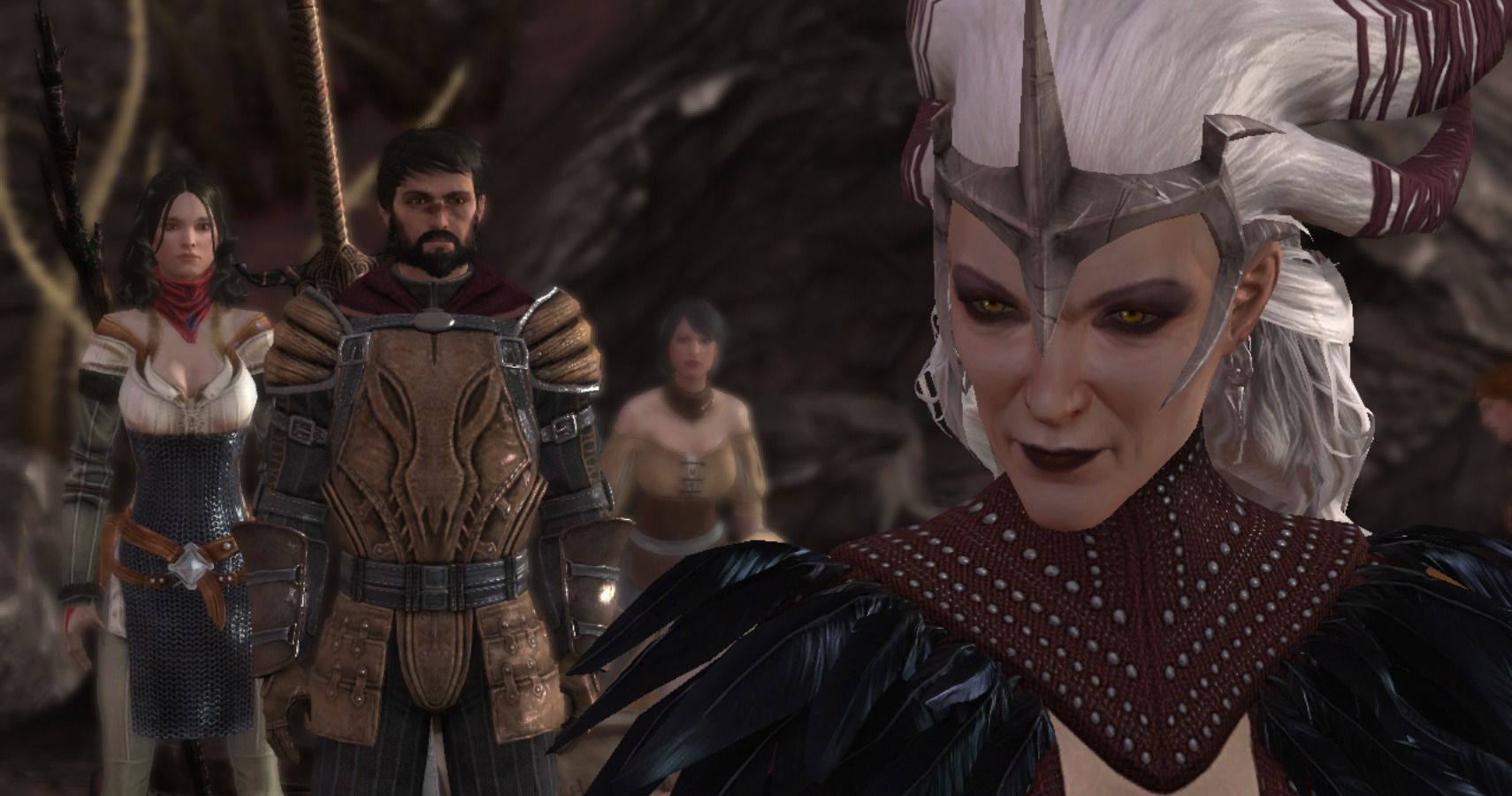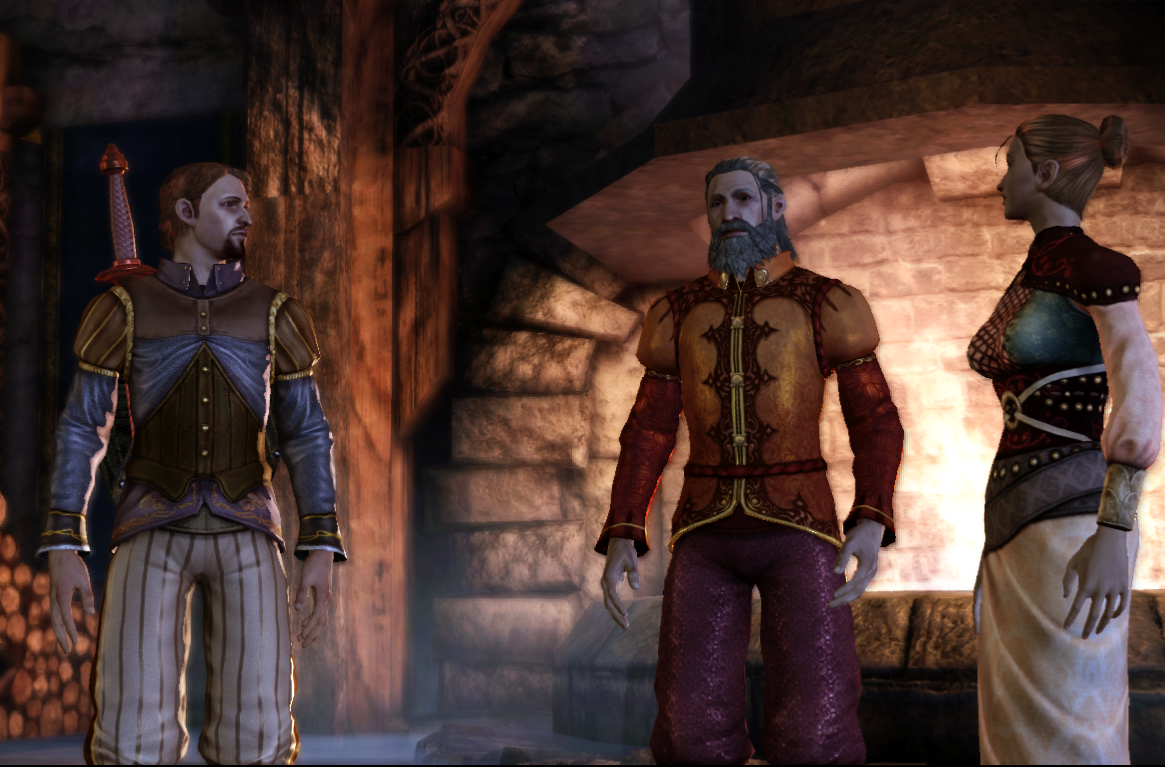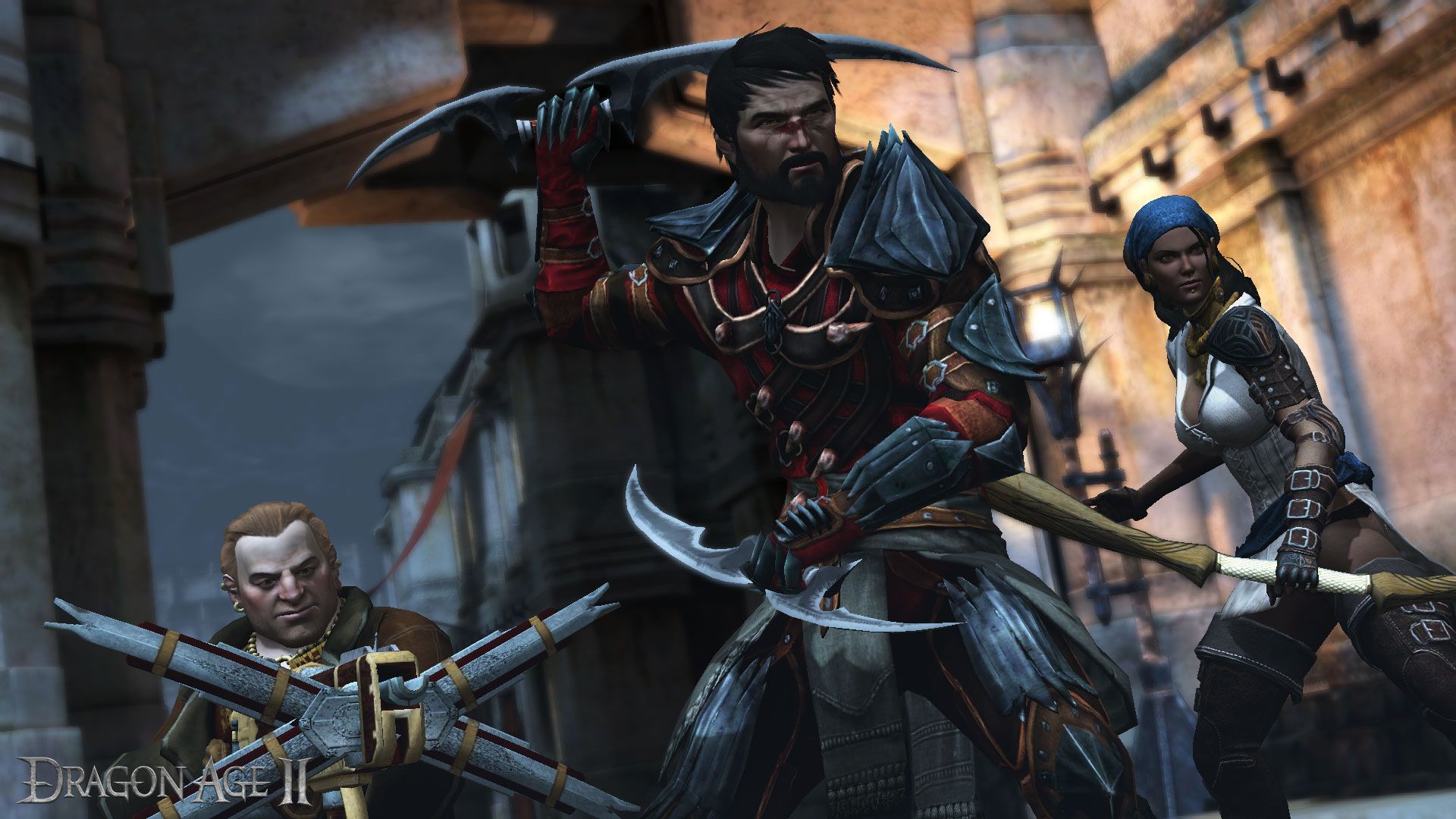Dragon Age 2 turned ten years old last month and not many people made a fuss about it. Often considered the ugly dragonling in a series torn between old and new BioWare, most people look at Dragon Age 2 and say, “Ah yes, the one with the recycled maps.” While it’s true that the game’s layout is a bit samey most of the time, I don’t think it’s necessarily fair to write the whole experience off for a single offense. We may never get the vast environmental disparity between Orzammar and the Brecilian Forest, or the Western Approach and Emprise du Lion, but at its core Dragon Age 2 is more concerned with companions and storytelling than fancy forests or snazzy snowscapes. In fact, I reckon its whole introductory section should be a lesson in modern RPG design.
I’m not one of those people who write off Inquisition as rubbish just because it came out after Mass Effect 3. I adore Inquisition and have played it multiple times, so when I say it has the worst intro in the series, I’m not throwing shade - it just doesn’t start off as well as the other two. The Cassandra interrogation angle was already done, and while I understand the need to tutorialize party combat, the start of Inquisition is a bit bloated. We get it, you have a weird Fade tattoo that lets you close snot green demon rifts. Once you get to Haven it’s all breezy in Thedas, but up until that point it’s a bit of a rocky ride.
Origins is usually the game people speak about when considering Dragon Age intros, and for good reason. Having entire prologue sections based on your class and species that have a real impact on how the game shapes out later on is genius - I’d go so far as to say Dragon: Age Origins did Cyberpunk lifepaths better than Cyberpunk did, except 11 years earlier and with more possible permutations. I replayed Origins a few weeks ago and couldn’t believe how much of an utter prick Jowan is - mate, you’re a blood mage! I’m your best bud and you’ve just lied through your teeth so you can team up with Loghain and try to poison Arl Eamon. Come on.
Dragon Age 2 may ditch the ostensible origin stories in that there’s no Harrowing for a mage, or weird darkspawn mirror for a Dalish rogue. But there are still real consequences for your choices here - choose a warrior or rogue and your brother Carver will get killed by an ogre, although opting to run a mage build will ensure that your sister, Bethany, is targeted instead. The beauty of this is that when you’re playing for the first time, you have no idea about who your family are or what implications choosing a certain build will have on the shaping of your story. Killing off a sibling in the first hour of the game is a pretty ballsy move, too, especially when you consider that you also need to choose whether to kill Wesley - a Templar infected with the taint - or allow his wife, Aveline, to do it herself. While the overall structure of the intro is the same, there are differences tied to the species and class you choose as well as your dialogue choices - it’s one stream separated by lots of minor distinctions as opposed to being broken into loads of branches with lower stakes.
And it works. By the time you reach Kirkwall, the juxtaposition of loss and new life is balanced masterfully. You look back one last time and then you put your good foot forward to work as either a merc or a smuggler for a year. At the end of it, you’re broke and shit out of luck, at least until Varric Tethras waltzes up to you and says, “Let’s make 50 quid and go to the Deep Roads.” I’m also a big fan of games having you do side missions to earn money in order to progress the main narrative, as I think it forces you to engage with the world more, although we’re into the main game now and past the intro, which is the focus of this piece. Maybe I’ll write about Dragon Age 2’s excellent post-intro sequence another time, eh?
Dragon Age 2’s opening section is extraordinarily brave. The other games don’t really hit you with a major decision until you’re a fair bit in, meaning you’ve got no real incentive to start over because you don’t like a decision you’ve made. When Carver or Bethany dies though, you immediately think you’ve made a balls of something. Wesley’s gone as well and Aveline hates me - how have I had such a desperately poor start, and why have I already been roped into doing the very much alive and kicking Flemeth’s dirty work? By the time you reach Kirkwall to kick off the main story you’re as broken and beaten as, well, a Fereldan chased from their homeland by the darkspawn and denied entry to a shithole city because it’s filled with greedy, grubby, and ghastly people. Again: it works.
Dragon Age 2’s intro is a masterclass in teeing up the story that follows, and its concrete setting of tone and atmosphere is unmatched elsewhere in the series - perhaps even elsewhere in BioWare as a whole. Don’t get me wrong, Eden Prime in the first Mass Effect game is a commanding starting point - despite how concerned I am about the way it looks in Legendary Edition - but I don’t think it’s quite as courageous as Dragon Age 2, a game people love to laugh at because of what is quite clearly the result of intense time and budget constraints. Once you accept that the maps look a bit similar and that mobs spawn in waves of a million, the rest of Dragon Age 2 is unquestionably excellent - and, in my opinion, that’s the stuff in a Dragon Age game that actually matters. It reminds me of people complaining about the Hinterlands in Inquisition - which you can leave basically immediately, by the way. It’s falling at the first hurdle by choice instead of giving the game a chance, and once you make it further in and start to hear references back to that banger of an intro, or experience unique dialogue based on the origin story you chose, you’ll realize just how brilliant it truly is. As I said before, modern RPGs could learn a lot from Dragon Age 2.



